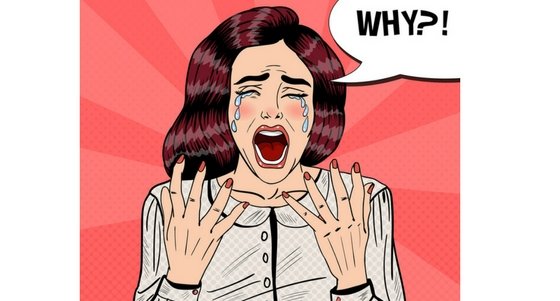Tennis great Jimmy Connors famously said, “I hate to lose more than I love to win.”
His aversion to loss isn’t limited to elite athletes. Distaste for losing motivates politicians, gamblers, businesspeople and importantly, ordinary consumers. And unless you recognize its power, you may make critical mistakes with your customer experience.
Prospect theory explains why we hate losing more than we like winning. As described by Professor Daniel Kahneman of Princeton’s Woodrow Wilson School (and winner of the 2002 Nobel Memorial Prize for Economics), we have a tendency to evaluate things in terms of gains and losses. We don’t like losing – even more than we enjoy gaining a similar amount.
To illustrate this, Kahneman gives us the example of betting on a coin toss. If you told college students that they’d lose $10 if the coin came up tails and then asked them what they’d have to win on heads to make the bet worthwhile, they’d say $25. This means that for people to be willing to risk losing, they have to have a chance of making much greater gains if they win.
Kahneman says the ratios stay the same in studies involving older people and larger sums of money.
Prospect Theory in the Real World
To see how this plays out in a customer context, think back to the new rewards program Starbucks unveiled last year. The old program rewarded people based on how many drinks they bought. The new one rewards people based on the amount of money they spend. Loyal Starbucks customers who buy a single tall coffee every day were outraged because it would now take them longer to earn rewards. They perceived that they had lost something of value. And Starbucks’ assurances that customers would have more ways to earn points did not convince them that the new policy was a win.
What this demonstrates is that we think about gains and losses very differently. When a service we had (like rewards points) is taken away, we see that as a loss of value, even if we aren’t really losing anything. And because of our irrational nature, we don’t feel the loss can be overcome by improvements elsewhere.
Here’s another example. When I go to the supermarket to buy deli meat, the clerk always shows me the first slice, asks if it looks ok, and then offers it to me as a sample. I look forward to this part of the shopping trip – it’s a free snack to sustain me as I peruse the dairy counter and canned goods. But now, my local market, Publix, has begun discontinuing the automatic free sample. Publix notes that samples are still available, if you ask for them.
This makes me feel that I’ve lost a beloved part of my grocery buying experience. Asking for a free slice feels like I’m too cheap to pay for it, whereas before it was bestowed like a gift. No doubt those free slices of deli meat cost Publix money, and the back and forth of offering samples slows down the deli line. But my grocer took away a benefit with no explanation.
Of course, sometimes companies have to change the way they do business, and that might mean taking away some benefits and adding new ones. But to create satisfaction, you must frame the offer correctly and communicate it in terms of benefits. Publix, for example, might have posted signs saying they’ve made some changes to ensure that you don’t have to wait in long deli lines anymore. To keep the line flowing, they won’t automatically offer you a sample. But if you want one, just ask when you place your order.
How This Relates to Your Customer Experience
Most organizations think of customer experience solely in terms of its logical, rational aspects: price, for example, or shipping speed. But customers are not rational. We are human beings prone to make decisions for all sorts of purely emotional reasons.
In our customer experience consultancy, we take clients through a process called Behavioral Journey Mapping in which we look at the customer’s journey from the emotional perspective and design an experience that takes emotions into account. Aversion to loss is just one of the emotional factors that plays into a customer’s subconscious decision making process. Tapping into these emotions is the key to designing a customer experience that will keep customers coming back for more.
Have any recent experiences left you feeling deprived or that you’ve lost out? Let us know in the comments below!
Make sure your Customer Experience doesn’t leave your customers feeling deprived or disappointed. Join our Secrets of a Successful CX Program. Use promocode LASTCHANCE to get 10% discount!
If you enjoyed this article, you might also like:
Another Amazing Mistake – Customers Revolt!
The Secret to Rewarding Customer Loyalty
Be Rational About Your Irrationality!
Colin Shaw is the founder and CEO of Beyond Philosophy, one of the world’s leading Customer experience consultancy & training organizations. Colin is an international author of five bestselling books and an engaging keynote speaker.
Follow Colin Shaw on Twitter @ColinShaw_CX


